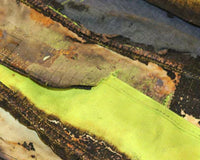Arc thermal performance value (ATPV) is a measurement of a material’s ability to protect a person from a burn due to exposure to incident energy resulting from an arc flash explosion.
The ATPV of a material refers to the amount of incident energy that is necessary for there to be a 50% probability for the onset of a second-degree burn for a person wearing that material when exposed to an arc flash explosion.
The higher the ATPV, the more protective the material is. It will protect the wearer from an arc flash if it has a higher calorie arc rating than the calories of heat generated by the electrical explosion. The material will only break open if exposed to energy levels that are higher than its ATPV. See below an example video from one of our clothing tests. The video is primarily showing the difference between Arc Rated (Left) and Non-Arc Rated Clothing (Right). Notice how the left clothing does not break open
What is the difference between ATPV and EBT?
Different materials may have different properties and characteristics, which means the level of protection needs to be presented in two different ways.
For instance, strong materials may remain intact after a test procedure, yet allow enough heat to be transferred through the material that a burn still occurs. In these cases, the test results are presented as an ATPV.
The other alternative is that the material offers high insulation, but instead ruptures and tears so that a hole opens up in the material, causing a burn. This rating is called the Energy Break Open Threshold (EBT).
Neither rating can be said to be better than the other, as the risk of a burn in both cases is 50%. With ATPV, the material remains intact but allows heat to pass through it. With EBT, the material ruptures and there is a hole in it. The lowest rating is the one that matters and so that’s the one that’s given.
Which is better - ATPV or EBT?
Whilst there was once the belief that one of these was better than the other – due to the material breaking open before reaching the threshold for skin burn protection. However, this was quickly found to be erroneous, with it being found that all material types could break open prior to the burn protection level being reached.
It is now evident that neither rating can be said to be better than the other, with both having their own advantages and disadvantages, and both having a 50% risk of a burn. With ATPV, the material remains intact but allows heat to pass through it. With EBT, the material ruptures and there is a hole in it. This is why the two have been combined and renamed as the term ‘Arc Rating’. The terms ATPV and EBT are now used as an addendum or subscript to the Arc Rating.
Both ATPV and EBT ratings are expressed in calorie/cm², with the lowest of the two being reported. While the material receives either an APTV or an EBT as the arc rating, both can be reported from testing. Only the lowest can be used as the arc rating on the clothing label though, in accordance with specifications set out in ASTM F1506, NFPA 70E and CSA Z462.
What is the difference between ATPV and ELIM?
Whereas the ATPV or EBT rating gives an indication of what incident energy level there is a 50% risk of getting a second-degree burn at, the incident energy limit (ELIM) defines the energy level at which the risk of a second-degree burn is avoided. There is, however, still a risk of getting a first-degree burn.
The more conservative ELIM rating is calculated as the average of the three highest incident energy data points without rupture, shrink open and without reaching or exceeding the Stoll curve. The three incident energy data points are taken just below the mix zone in the test report.
The Stoll curve determines the rating of the transfer of heat energy (calories) based on the time of transfer and the level of heat energy produced.




